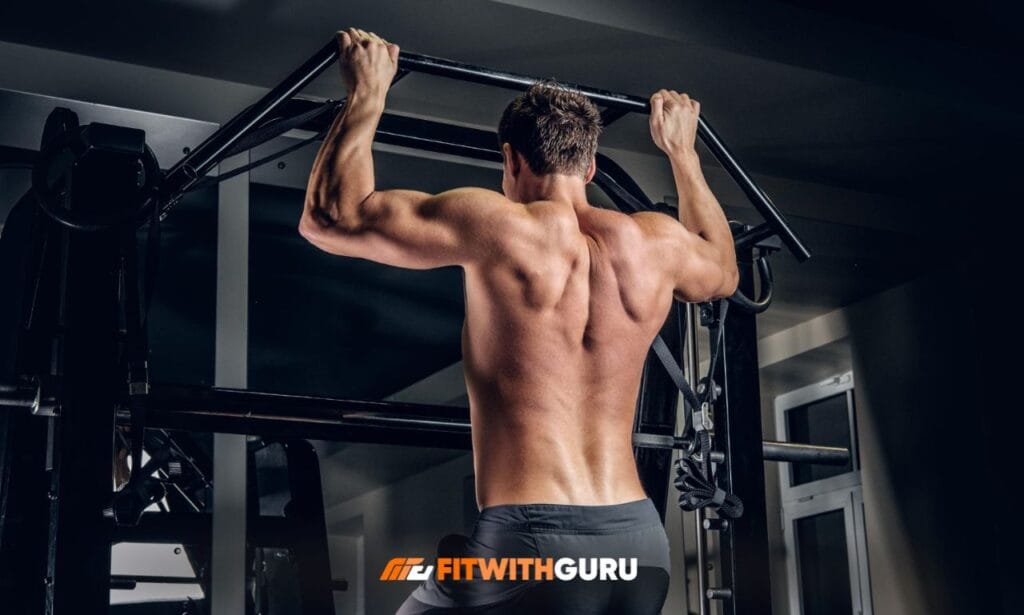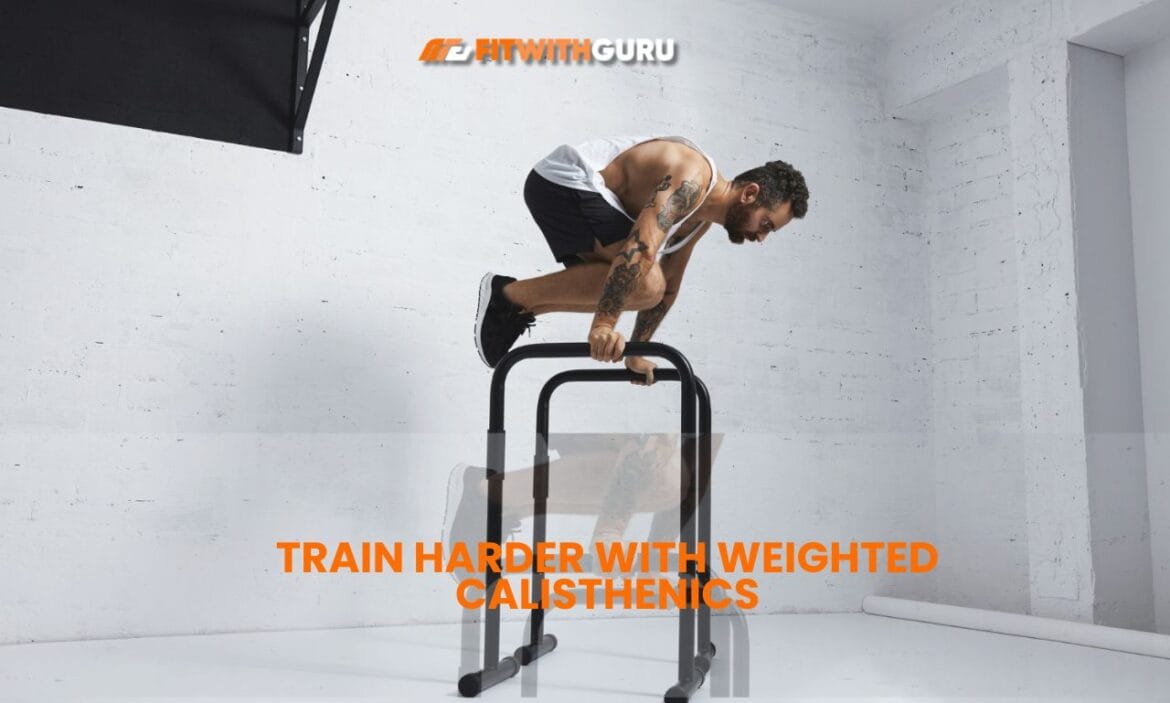Weighted calisthenics is a training method that involves incorporating extra resistance into traditional bodyweight exercises. This added weight challenges your muscles in a new way, promoting strength, muscle growth, and overall performance.
Incorporating weights into calisthenics allows you to target specific muscle groups more effectively and accelerate your progress, making it a go-to option for those serious about their fitness journey. In this article, we’ll explore 6 must-try weighted calisthenics moves that will bring serious strength gains to your workouts.
Why Should You Try Weighted Calisthenics?
Before diving into the specific moves, it’s important to understand why weighted calisthenics should be a part of your workout routine. Here are some key benefits:
- Increased Muscle Activation: Adding extra weight forces your muscles to work harder than bodyweight alone, leading to greater muscle activation.
- Strength Gains: Weighted calisthenics promote strength by challenging your muscles with additional resistance, which encourages hypertrophy (muscle growth).
- Versatility: Unlike traditional weightlifting, weighted calisthenics allow you to use your own body as a base, improving functional strength and mobility.
- Convenience: You can perform weighted calisthenics without needing heavy gym equipment, making it easier to train anywhere.
1. Weighted Push-Ups: Mastering Upper Body Power
One of the most effective moves in weighted calisthenics is the weighted push-up. This exercise targets your chest, shoulders, and triceps, building pressing power.
To perform weighted push-ups:
- Place a weight plate or a vest on your back.
- Assume a standard push-up position, keeping your core engaged and your body in a straight line.
- Bring your chest down towards the floor, then press back up to the original position.
The added weight will intensify the movement, helping you build pressing strength and endurance over time. For those looking to take things further, you can increase the weight progressively to continue challenging your upper body.
2. Weighted Pull-Ups: Developing a Powerful Back
Next up is the weighted pull-up, a must-try exercise in weighted calisthenics for building upper body strength, particularly in the back and biceps.
Here’s how to perform a weighted pull-up:
- Utilize a dip belt to secure weights to your body or put on a weighted vest.
- Grab the pull-up bar with an overhand grip and pull yourself up until your chin is above the bar.
- Lower yourself back down under control, ensuring your form remains intact.
Weighted pull-ups target the latissimus dorsi, biceps, and traps. They build the kind of pulling strength that translates well into real-world activities. This move also improves grip strength, which is crucial for many other exercises.

3. Weighted Dips: Building Upper Body Mass
Weighted dips are highly effective for building strength in the triceps, chest, and shoulders.
Here’s a step-by-step guide:
- Set up a dip station or use parallel bars.
- Attach a weight belt or vest to your body.
- Lower yourself down until your upper arms are parallel. Descend until your upper arms are level with the floor, then press back up to the initial position. the ground, then push back up to the starting position.
By incorporating weights into your dips, you challenge your muscles beyond their normal capacity, stimulating growth and strength in the pressing muscles of the upper body. Weighted dips are especially useful for building the triceps, which are essential for pushing power in exercises like the bench press.
4. Weighted Squats: Mastering Lower Body Strength
The weighted squat is a foundational movement in strength training and one of the most important weighted calisthenics exercises.
To perform a weighted squat:
- Wear a weighted vest or a backpack filled with weights on your upper body.
- Stand with your feet set at shoulder distance, maintaining an upright chest and a straight back.
- Bend your knees and hips to lower your body, striving for your thighs to reach parallel to the ground.
- Drive through your heels to rise back to the standing position.
Weighted squats primarily target your quads, hamstrings, and glutes. They improve overall lower body strength and help develop the explosive power needed for jumping and sprinting. By using different variations, such as goblet squats or adding a barbell, you can continue to challenge your muscles in new ways.
5. Weighted Lunges: Enhancing Leg Power and Stability
Weighted lunges are a fantastic way to isolate the quads, hamstrings, and glutes while also improving your balance and stability.
To perform a weighted lunge:
- Grip a dumbbell or a weight plate in each hand, or opt for a weight vest.
- Take a large step forward and lower your back knee toward the floor.
- Push off your front leg to return to the starting position.
- Repeat on the other leg.
Weighted lunges engage your legs in a single-leg pattern, which helps to improve symmetry and stability. This is especially beneficial for athletes who need to maintain balance during dynamic movements.

6. Weighted Planks: Strengthening Your Core
Core strength is vital for nearly every movement in weight training and weighted calisthenics. Adding weight to the traditional plank can significantly increase the challenge.
To perform a weighted plank:
- Set yourself up in a forearm plank position.
- Have a training partner or use a weighted vest to add extra weight to your back.
- Hold the position for as long as possible, keeping your body straight and core engaged.
Weighted planks provide a solid foundation for core strength and stability. A strong core is essential for performing advanced callisthenics moves, improving posture, and preventing injuries.
How to Safely Incorporate Weighted Callisthenics Into Your Routine
While weighted calisthenics can bring immense benefits to your training, it’s crucial to follow proper techniques and gradually increase the weight to avoid injury. Here are some tips for safe training:
- Start Slow: If you’re new to weighted calisthenics, begin with light weights and focus on form.
- Prioritise Recovery: Your muscles need time to recover after intense sessions. Ensure you give yourself proper rest between workouts.
- Progressive Overload: Gradually increase the resistance to avoid plateauing. Minor weight gains can have a significant impact.
- Warm-Up and Cool-Down: Always warm up before your workouts and cool down afterwards to reduce the risk of injuries.
People Also Ask
1. What is the difference between regular calisthenics and weighted calisthenics?
Regular calisthenics rely solely on bodyweight for resistance, while weighted calisthenics add extra weight to the exercises. This added resistance enhances muscle activation, leading to faster strength and muscle gains.
2. Can weighted calisthenics be used for fat loss?
Yes, weighted calisthenics can help burn fat. As you add weight, your body needs to expend more energy, which increases your calorie burn and promotes fat loss. However, nutrition and consistency are key factors in achieving fat loss goals.
3. How often should I train weighted calisthenics?
Aim to train weighted calisthenics 2-3 times per week, allowing for proper recovery. This frequency will provide the right balance of challenge and rest for muscle growth.
4. Can I use weights for all bodyweight exercises?
Most bodyweight exercises can be performed with additional resistance. Some moves, like push-ups, pull-ups, and dips, are highly effective when weighted. However, it’s important to assess each exercise’s suitability for weighted training.
5. Is weighted calisthenics suitable for beginners?
While weighted calisthenics can be challenging, beginners can still benefit from starting with lighter weights or using bodyweight variations first. Gradually increasing resistance as your strength improves is key.
Conclusion: Start Building Serious Strength Today
Weighted calisthenics is a powerful tool for building strength, enhancing muscle mass, and improving overall performance.
Incorporating these 6 must-try exercises into your routine will not only challenge your body in new ways but also help you make faster progress toward your strength goals.
Remember, consistency and proper form are crucial. With patience and dedication, you’ll be well on your way to mastering weighted calisthenics and achieving serious strength gains.

